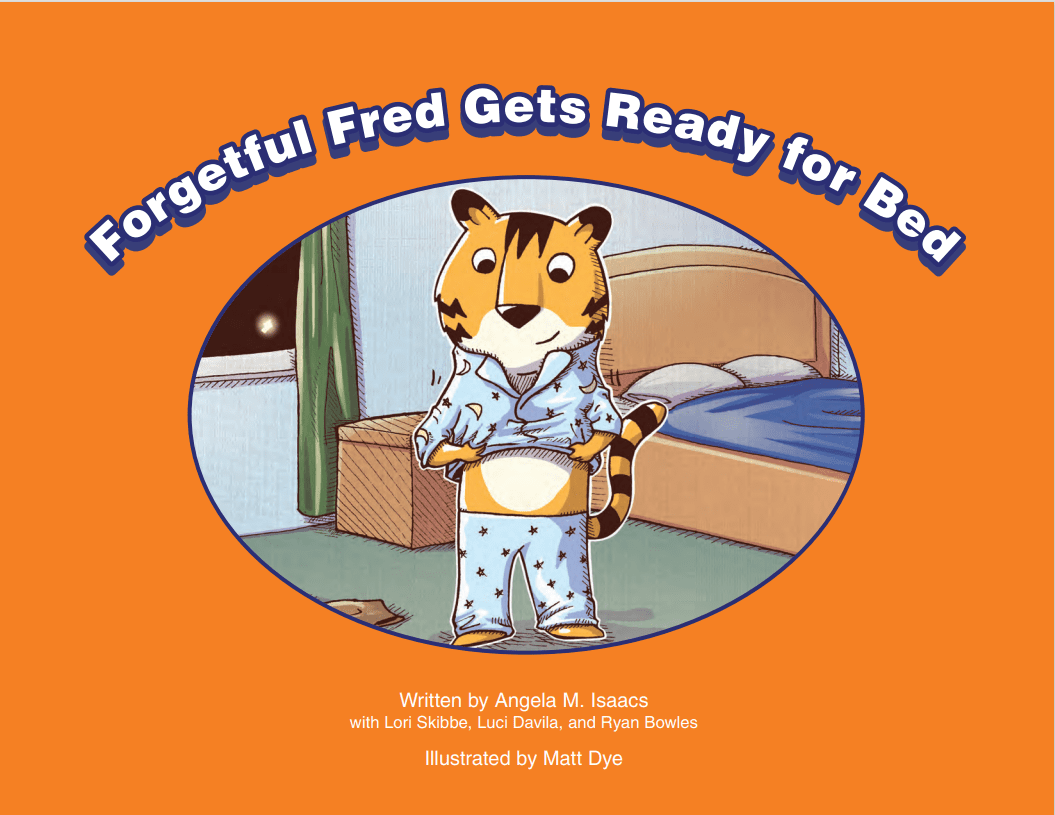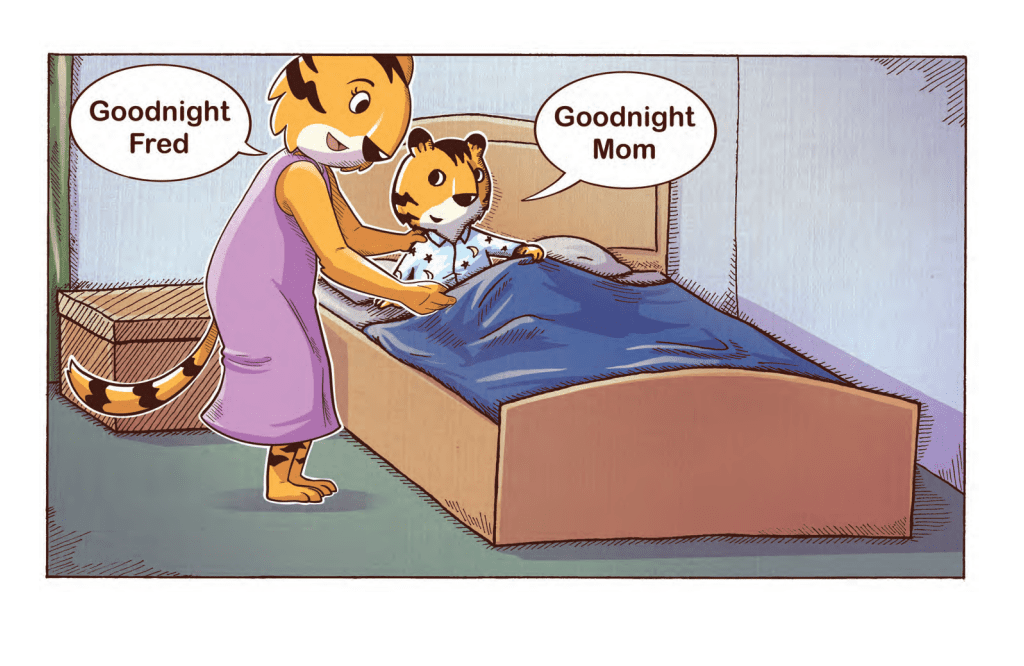
Science has shown that young students who fall behind in reading in the classroom often face poorer life outcomes. Without early identification and intervention, these literacy gaps can persist throughout a child’s education and adulthood. Now, an innovative assessment tool from Michigan State University (MSU) researchers aims to identify these at-risk children during preschool when intervention can make the greatest difference.
The tool, known as PAWPrint Concepts, was created by MSU Department of Human Development and Family Studies researchers Dr. Lori Skibbe and Dr. Ryan P. Bowles to evaluate a child’s print concept knowledge—a foundational literacy skill involving the understanding of how printed materials work. This includes recognizing that printed words carry meaning, understanding reading direction, identifying titles, and more—all critical precursors to reading success.
“Print concepts knowledge is important because children who are at risk for later reading difficulties tend to take longer to understand these skills,” explains Dr. Bowles, whose research focuses on assessment development for language and literacy skills in young children. “If we can identify when children need help earlier in the process, this is a skill that is malleable and easy to teach.”
What makes PAWPrint Concepts revolutionary is its two-part design: a purpose-built children’s book and a complementary assessment. In the process, educators read the storybook Forgetful Fred Gets Ready for Bed to a child, then follow up with questions from the PAWPrint Concepts assessment. This allows for precise evaluation of print concepts knowledge in children typically aged 3 to 5 years old.

“One of the limitations of prior measures is that they rely on commercially available books, which makes it challenging to figure out how to ask children what they know in precise ways,” says Dr. Skibbe, who has been researching print concepts knowledge since graduate school. “We wrote a children’s book uniquely suited to assess children’s print concepts knowledge.”
This innovation allows for more precise evaluation across a wider range of abilities—from basic to more advanced concepts—giving educators a clearer picture of each child’s needs. For Skibbe and Bowles, this work represents the culmination of years of dedication to improving early childhood literacy assessment.
“I think print concepts knowledge is important because it’s an area where children who are at risk for later reading difficulties tend to take a little bit longer to understand these skills,” Bowles emphasizes. “The key with any assessment is you can’t know what the kid needs if you don’t know what they already have. That’s why assessment for education in general is so critical.”
Skibbe’s interest in this field stems from seeing how targeted instruction can make a profound difference. “One of the things that drew me to an assessment of print concepts knowledge is that it is a skill that children are able to be taught,” she explains. “If we understand that children need additional help in this area, there are concrete ways that teachers can then go on to support children’s learning.”
This design improves both accuracy and efficiency. The new book was written to align with the assessment, shortening administration time by eliminating pages that weren’t linked to assessment items—while maintaining an engaging story. It also introduces additional questions to evaluate a broader range of print concepts knowledge than earlier versions, which were limited by the unavailability of an out-of-print commercial book.
The researchers emphasize that while many children naturally acquire print concepts knowledge through interactions with caregivers or classroom environments, those with language impairments or limited exposure to books may not. PAWPrint Concepts helps identify these children, enabling targeted support at a critical developmental window.
Drs. Skibbe and Bowles, the inventors of both the book and the assessment, have a long history of advancing early literacy research. Their broader portfolio includes a Phonological Awareness Assessment, developed for children aged 3 to 7, which focuses on rhyming, blending, and segmentation skills—another strong predictor of later literacy success. This adaptive test, known as ATLAS, allows for individualized assessment and tracks student growth efficiently over time.
When Julia Miller, Technology Manager at the MSU Innovation Center, learned about PAWPrint Concepts, she immediately recognized its potential. The MSU Innovation Center supported the effort not only through intellectual property protection and licensing but also by facilitating connections, developing contracts, creating marketing materials, and guiding legal considerations. Miller also assisted with a Targeted Support Grant for Technology Development (TSGTD) grant for the Phonological Awareness tool, which included beta testing with educators and speech-language pathologists. That collaboration with Ventris Learning laid the groundwork for licensing PAWPrint Concepts.
“The supportive collaboration we had with Ventris during the TSGTD grant laid the foundation for licensing another assessment, PAWPrint Concepts. Ventris is a great partner for commercializing PAWPrint Concepts as they already have experience distributing assessment tools from universities,” said Miller.
“The Innovation Center has been highly supportive of our work here at MSU, and I don’t think we would be as far as we are without them,” says Dr. Skibbe. “They provided instrumental support in helping us connect with a publisher and develop a contract, as well as support to get outside consultants to evaluate and improve our features.”
Ventris Learning, a publisher of language & literacy innovations, saw immediate value in the PAWPrint Concepts technology. “I had already worked with Lori and Ryan on two other projects,” said Robert Meyer, President of Ventris Learning. “It fits into our product line really well, and we also have a purpose at our company of supporting research to practice.”
Ventris is now printing and distributing the book and assessment across the U.S. and Canada to be used by educators, speech-language pathologists, and parents. “We wouldn’t be easily able to do the printing and distribution ourselves,” Miller notes, emphasizing the importance of the partnership.
Meyer believes PAWPrint Concepts is especially valuable for underserved groups: “With English language learners, often home literacy does not involve reading books to children. With this book, it’s super easy and short to assess, making it valuable for teachers educating young English learners.”
He also points out the tool’s pioneering nature: “I understand it’s the first validated measure of its type. There’s a big need in education for better, more time-efficient assessments for early language and literacy problems.”
PAWPrint Concepts also serves as an effective screening tool, helping teachers identify children who may need deeper evaluation. “If you fail PAWPrint Concepts, the teacher knows you don’t yet understand how books work,” Meyer explains. “That can be a sign that something else is going on.”
This collaboration between MSU researchers, the Innovation Center, and Ventris Learning demonstrates how academic innovation can evolve into real-world impact. With strategic support and strong partnerships, PAWPrint Concepts is positioned to help educators address literacy gaps early—and potentially change the trajectory of countless children’s lives.
Is your organization looking to collaborate with any of MSU’s childhood literacy innovators? Click Here.
About the MSU Innovation Center:
The MSU Innovation Center combines research partnerships, technology transfer, and startup support for MSU faculty who aim to see their research applied to make the world a better place.
Composed of Business Connect, MSU Technologies, and Spartan Innovations, the MSU Innovation Center aims to amplify the impact of faculty research and drive economic growth while positively impacting society to solve real-world challenges with cutting-edge ideas.
Through mutually beneficial, long-term partnerships with the private sector, we connect MSU faculty with companies for corporate-sponsored research collaborations. We also play a key role in facilitating the commercialization and public use of technologies and copyrightable materials, moving MSU’s innovations from the lab to the marketplace. Importantly, we provide significant support for faculty entrepreneurs in establishing startup companies based on technologies developed at MSU.
